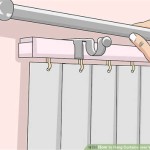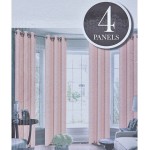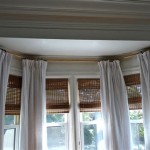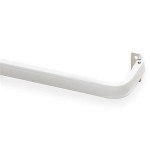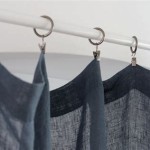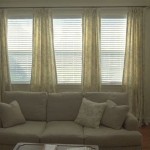```html
Understanding Outside Mount Curtain Rod Brackets
Outside mount curtain rod brackets, also known as wall mount brackets, are essential hardware components used to install curtain rods. Unlike inside mount brackets that are affixed within a window frame, outside mount brackets are mounted to the wall surrounding the window. This mounting style provides flexibility in window treatment design and functionality, offering several advantages in specific scenarios.
When choosing curtain hardware, understanding the nuances of outside mount brackets is crucial for achieving the desired aesthetic and ensuring a secure and lasting installation. This article will explore the functionality, advantages, uses, types, installation considerations, and selection criteria for outside mount curtain rod brackets.
Functionality and Advantages
The primary function of an outside mount curtain rod bracket is to provide stable support for a curtain rod beyond the window frame. This seemingly simple function provides several key advantages. Firstly, it allows for the curtains to completely cover the window, maximizing light blockage and privacy. This is especially useful in bedrooms or home theaters where minimizing external light is critical.
Secondly, outside mounting can create the illusion of a larger window. By extending the curtain rod beyond the window frame, the fabric drapes beyond the physical boundaries of the window opening, making it appear wider and taller. This is a valuable design technique for smaller windows or rooms where maximizing the perception of space is desirable. The expanded visual space can significantly impact the overall feel of the room.
Thirdly, outside mount brackets are often necessary when window frames are narrow or nonexistent, preventing the use of inside mount options. This is a common scenario in older homes or in rooms with unique architectural features. In such cases, an outside mount is the only practical solution for hanging curtains.
Finally, these brackets offer design flexibility. Curtains can be layered more easily with outside mounting, allowing for combinations of sheer and blackout curtains for varied light control and visual interest. Valances or other decorative top treatments are also more easily accommodated with outside mount brackets.
Common Uses and Applications
Outside mount curtain rod brackets find applications in a wide range of situations. One of the most common uses is in bedrooms where complete darkness is desired. By extending the curtains beyond the window frame, light leakage around the edges is significantly reduced, contributing to a darker and more conducive sleep environment.
In living rooms and dining rooms, outside mounting can enhance the visual appeal of the window. By strategically placing the curtain rod and curtains, designers can alter the perceived proportions of the window and the room itself. This is especially useful in rooms with unusually shaped windows or challenging architectural elements.
Additionally, outside mount brackets are often employed in bathrooms. Due to the moisture-prone environment of bathrooms, it is often preferable to keep window coverings away from direct contact with the window frame. Outside mounting allows for adequate ventilation and prevents potential damage to the window frame from moisture accumulation.
Another important application is in situations where window obstructions exist. If the window frame is obstructed by a protruding object, such as a crank handle or a security system component, inside mounting may be impossible. Outside mount brackets provide the necessary clearance to bypass the obstruction and achieve a functional curtain installation.
Types of Outside Mount Curtain Rod Brackets
Outside mount curtain rod brackets are available in several different types, each designed to accommodate specific curtain rod sizes, weights, and aesthetic preferences. Standard single rod brackets are the most common type, designed to hold a single curtain rod. These brackets are typically made of metal, such as steel or aluminum, and are available in various finishes to match the curtain rod and overall decor.
Double rod brackets are designed to hold two curtain rods, allowing for layering of curtains. This is useful for combining sheer curtains with blackout curtains or for adding a decorative valance. Double rod brackets are often more robust than single rod brackets to support the additional weight of the two rods and curtains.
Adjustable projection brackets allow for adjusting the distance between the wall and the curtain rod. This is particularly useful when dealing with protruding window sills or other obstructions. Adjustable projection brackets provide flexibility in positioning the curtains to achieve the desired look and functionality.
Decorative brackets are designed with aesthetic appeal in mind. These brackets often feature intricate designs, ornate detailing, and unique finishes. Decorative brackets can serve as a visual accent, enhancing the overall aesthetic of the window treatment. They are often chosen to complement the style of the curtains and the room's decor.
Heavy-duty brackets are designed to support heavier curtains, such as blackout curtains or lined drapes. These brackets are typically made of thicker metal and feature a more robust construction to ensure stability and prevent sagging. Heavy-duty brackets are essential for installations where the curtains are substantial in weight.
Installation Considerations
Proper installation of outside mount curtain rod brackets is crucial for ensuring the stability and longevity of the curtain rod and the overall aesthetic of the window treatment. The first step is to accurately measure and mark the desired location for the brackets. It is essential to use a level to ensure that the brackets are aligned horizontally.
The type of wall material must be considered when selecting the appropriate mounting hardware. For drywall, it is generally necessary to use wall anchors to provide adequate support. Wall anchors distribute the weight of the curtains and rods over a larger area, preventing the screws from pulling out of the drywall. For plaster walls, specialized plaster anchors may be required.
When installing brackets on stud walls, it is preferable to screw directly into the wall studs whenever possible. This provides the most secure and stable attachment. A stud finder can be used to locate the studs behind the drywall or plaster.
The weight of the curtains and rods must be considered when determining the number of brackets needed. For heavier curtains, it may be necessary to use additional brackets to provide adequate support and prevent sagging. A general rule of thumb is to use a bracket every 3 to 4 feet of rod length.
After installing the brackets, it is important to test their stability before hanging the curtains. Gently tug on the brackets to ensure that they are securely attached to the wall. If any movement is detected, the screws may need to be tightened or the anchors may need to be replaced with more robust options.
Selection Criteria for Outside Mount Curtain Rod Brackets
Choosing the right outside mount curtain rod brackets involves careful consideration of several factors. The first and foremost consideration is the weight and type of curtains that will be hung. Heavier curtains require stronger brackets with a higher weight capacity. The material of the bracket should be appropriate for the intended load.
The diameter of the curtain rod is another critical factor. The brackets must be sized appropriately to accommodate the diameter of the rod. Using brackets that are too small or too large can compromise the stability of the installation.
The style and finish of the brackets should complement the overall decor of the room. Brackets are available in a wide range of styles and finishes, from traditional to contemporary. Choosing brackets that match the curtain rod and other hardware elements will contribute to a cohesive and aesthetically pleasing design.
The adjustability of the brackets is an important consideration, especially when dealing with uneven walls or protruding window sills. Adjustable projection brackets provide flexibility in positioning the curtains to achieve the desired look and functionality.
The quality of the materials and construction of the brackets is also a key factor. High-quality brackets will be made of durable materials and will feature a robust construction. Choosing brackets from reputable manufacturers will ensure that they are built to last and will provide reliable support for the curtains.
Finally, consider the ease of installation. Some brackets are easier to install than others. Look for brackets that come with clear instructions and all the necessary hardware. If you are not comfortable with DIY projects, it may be advisable to hire a professional installer.
```
No Drill Brackets Hang Curtains Over Blinds Sliding Glass Door Without Screws Or Nails The Nono Bracket

Nono Bracket Outside Mounted Blinds Curtain Rod Attachment Black

Nono Bracket Outside Mounted Blinds Curtain Rod Attachment Black

Nono Bracket Outside Mounted Blinds Curtain Rod Attachment Set Of 3

Arts Crafts Period Textiles

Nono Bracket Outside Mounted Blinds Curtain Rod Attachment Antique Brass

How To Install Curtain Rods Best Practices The Shade

Nono Bracket Outside Mounted Blinds Curtain Rod Attachment Set Of 3 White

How To Install Curtain Rods Best Practices The Shade

Nono Bracket Outside Mounted Blinds Curtain Rod Attachment Furniture Home Living Improvement Organisation Tools Accessories On Carousell

